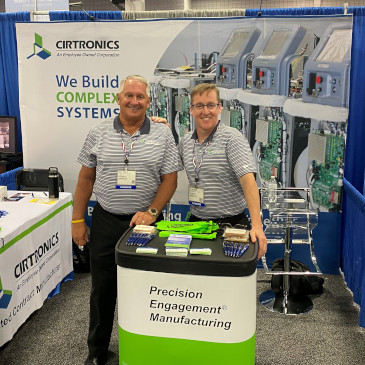
Introduction
Your manufacturer should feel like an extension of your business.
Manufacturing relationships are just that – relationships. Since your CM (contract manufacturer) will be working alongside you, actively learning about your system and the requirements specific to your company and application, your partnering decision needs to be deliberate and extend beyond bottom-line cost comparisons.
The following Key Considerations are shared as a guide in supporting your selection of a manufacturer who will co-create a path—tailored to you and your system—toward successful commercialization. Each step from onboarding to production should feel like it was made just for you, your priorities, and your product.
So, what are the considerations for choosing the partner who feels like an extension of your business? And what kinds of engagement and interactions will support a win-win relationship?
Key #1: Your Capabilities
Start inside your own company.
Assess your company’s unique capabilities and strengths. Then when you look for trusted partners, seek organizations whose areas of competence and qualifications complement yours. By collaborating with well-aligned external resources, your team can focus on your company’s core competencies – the engineering and innovative expertise that brought your system to manufacturing readiness.
Key #2: Reliable Supply Chain
Trust your partner’s expertise.
If you’ve been building prototypes or low quantities inside your organization or with a prototype fabricator, or even if you’ve been working with another manufacturer, your new CM should expertly audit your bill of materials against known or forecasted uncertainties in material availability. By working with you, they can identify supply chain strategies that provide a balance of stability and flexibility for the parts you need to build your product at scale, over time, within the specifications required. Sourcing strategies could include pre-buys/bulk buys, binding forecasts, and the identification of multiple validated sources for critical components.
Key #3: Manufacturing Handoff
Documentation and optimization of build procedures are required for a successful handoff to production.
Active and open knowledge transfer with your manufacturer is critical. Cooperative Building (co-building) is one example of best practices. Co-building is building a product directly alongside your manufacturing company’s engineers. Processes are validated, any changes that are required to increase build efficiency or improve ease of assembly can be made, and the final process is fully documented. The result is the complete set of experience-based documentation required to manufacture (and test) the product. This validation process, documentation creation, and hands-on experience will accelerate your product’s ramp to full-scale manufacturing. And the process of building product together builds the relationship as well. It fosters trust, collaboration, and transparent communication between your company and your manufacturer.
Key #4: A Path to Scale
Ensure your partner has the right capabilities and adaptability for successful commercialization at scale.
Manufacturing partners should provide a path to scale to meet increasing demand for your product. If you have units in the field, do they have capacity to meet forecasted demand? If you’re transitioning into your first production run, does your CM have the capacity to scale with you? Can they creatively adapt to fluctuations in demand? Depending on your needs, can they handle managing and manufacturing multiple models (SKUs), drop-ship to customers, or even provide direct delivery?
Key #5: Communication
Communication with your manufacturer is critical to your successful partnership.
The intention of all communication – from both sides – should be proactivity, honesty, and transparency. You should be able to access information about any aspect of the manufacturing process of your product that you would like to know, including part sourcing, product build status, and delivery status.
Key #6: Company Culture
You might be thinking, “Culture? What does the Culture of my contract manufacturer have to do with building my product? “
Authentic Culture is not a tagline. It’s more than just a mindset. It is a way of being and acting in the workplace and with customers and partners. A strong culture creates an atmosphere of service, where excellence and integrity begin within the company, and are reflected in every interaction with you and in every action taken on your behalf. It’s vital that the culture and values of your manufacturer align with your company’s vision. Shared values enable mutual trust. Trust is necessary in creating and maintaining a strong and successful relationship between your two companies.
Conclusion
Selecting a partner is not a one size fits all. It takes time and energy to find the right manufacturing relationship. The manufacturing partner you choose is key in successful commercialization of your product. Leveraging insourcing as a model, they will act as an extension of your business. Your partner’s process, style of work, and communication must be aligned with yours. Trust, values, goals, and complementary skills sets are a strong foundation for long term, successful commercialization relationships.


